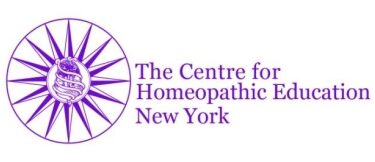
Avanish Kumar Srivastava, Director, CSIR, (AMPRI), Bhopal & Prof. Dr. Nisanth Nambison, Nodal officer for Research at Govt. Homeopathic Medical College and Hospital exchanged documents.
Bhopal 14/02/2020
Today at a humble ceremony Dr. Avanish Kumar Srivastava, Director, CSIR, (Council of Scientific and Industrial Research ) AMPRI, (Advanced Materials and Processes Research Institute Bhopal) and Prof. Dr. Nisanth Nambison, Nodal officer for Research at Govt. Homeopathic Medical College and Hospital exchanged documents to undertake a collaborative research study to unravel the mysteries of highly diluted homeopathic medicines. This is a first of its kind research in the field of homeopathy. Apart from solving the high-dilution mystery, it may help in quality control and more precise prescribing.
Highly diluted homeopathic medicines have long been a mystery in scientific circles. However, studies conducted by Luc Montagnier, who won a Nobel prize for discovering HIV-AIDS, revealed new research methods and a new physical property of highly diluted DNA samples of viruses and bacteria. His study showed that these highly diluted solutions emit EMS (Electro Magnetic Signals).
Now, Dr. Nambison has taken up the task of replicating Montagnier’s work to find novel methods of capturing electromagnetic signals from magnetic photons in homeopathic medicines.
He is collaborating with Dr. H.N. Bhargav (Senior Principal Scientist) along with his team of Dr. Meraj Ahmed, Senior Scientist, Dr. Sanjay Panthi, Dr. SAR Hashmi, Dr. A. K. Singh of the highest scientific body for material research in the country, CSIR, and AMPRI.
The study is unique and important in the current scenario of attacks and questions being raised about high dilutions. Analysis of the presence of magnetic photons in highly diluted homeopathic medicines has inspired research for a few decades.
Lenger in 2006 reported the presence of magnetic photons in homeopathic potencies using magnetic resonance from two Tesla coils that generated longitudinal waves at distinct resonance frequencies at low micro voltages. In this way, the magnetic properties of potencies were determined.
Montagnier in 2007 discovered that bacterial and viral DNA samples produced low-frequency EM waves in rich aqueous dilutions. This phenomenon favors the development of highly precise detection systems for bacterial and viral infections. Montagnier in 2009 reported that an original property of DNA was the capacity of a few sequences to prompt production of EM waves in rich aqueous dilutions. These resemble a resonance phenomenon triggered by electromagnetic environments consisting of waves having very low frequency.
Torgomyan in 2011 reported that the common features and mechanisms of coherent and noise EMI, along with the physiological effects of low intensity EMI on Escherichia coli and other bacteria, had been comprehensively studied for the last few years.

Several senior scientists and Dr. Narendra Sharma and Dr. Abhishek Dhar Dwivedi, part of the study team, were also present at the ceremony.

Dr. Avanish Kumar Srivastava, Director, CSIR, (AMPRI), Bhopal & Prof. Dr. Nisanth Nambison, Nodal officer for Research at Govt. Homeopathic Medical College discussing modalities of research.
The team is hopeful that the research will answer age old questions about highly potentized remedies. Doing that would go a long way in responding to critics. This research might also provide new mechanisms for quality control in homeopathic medicines.







Dr N Nambisan, pls contact me.
J Yasgur